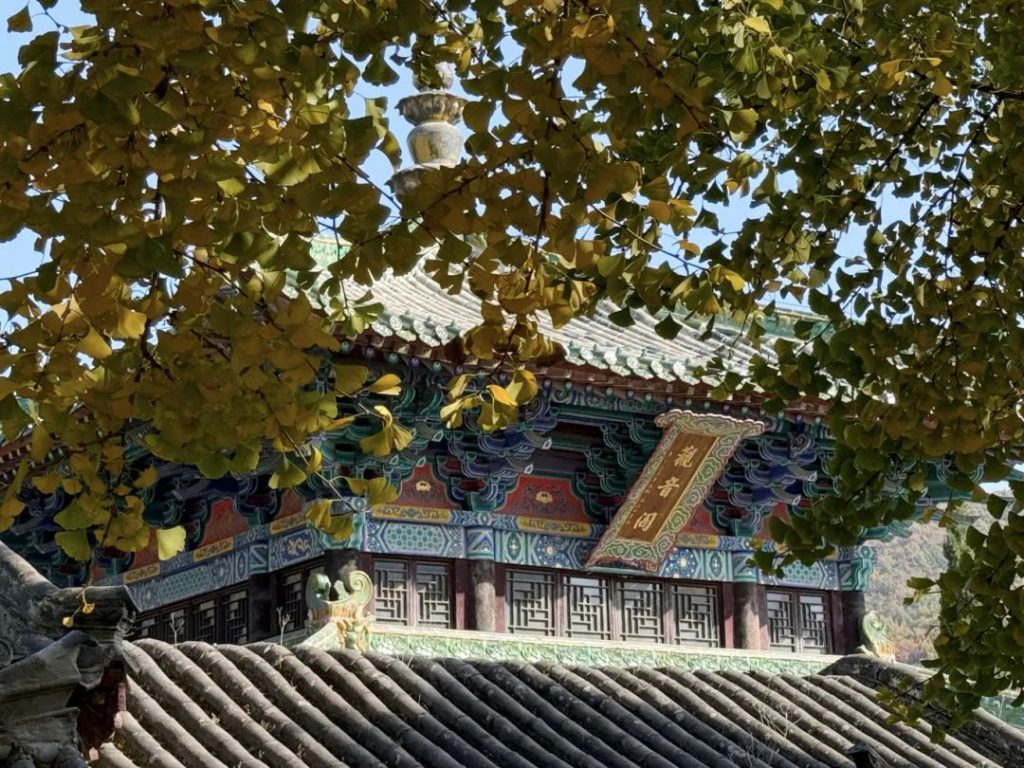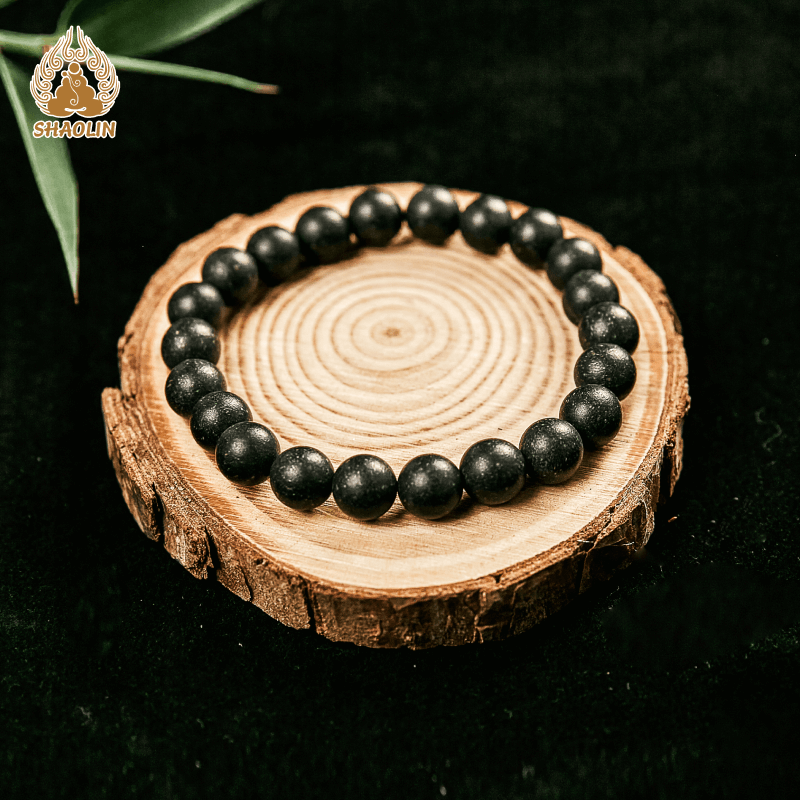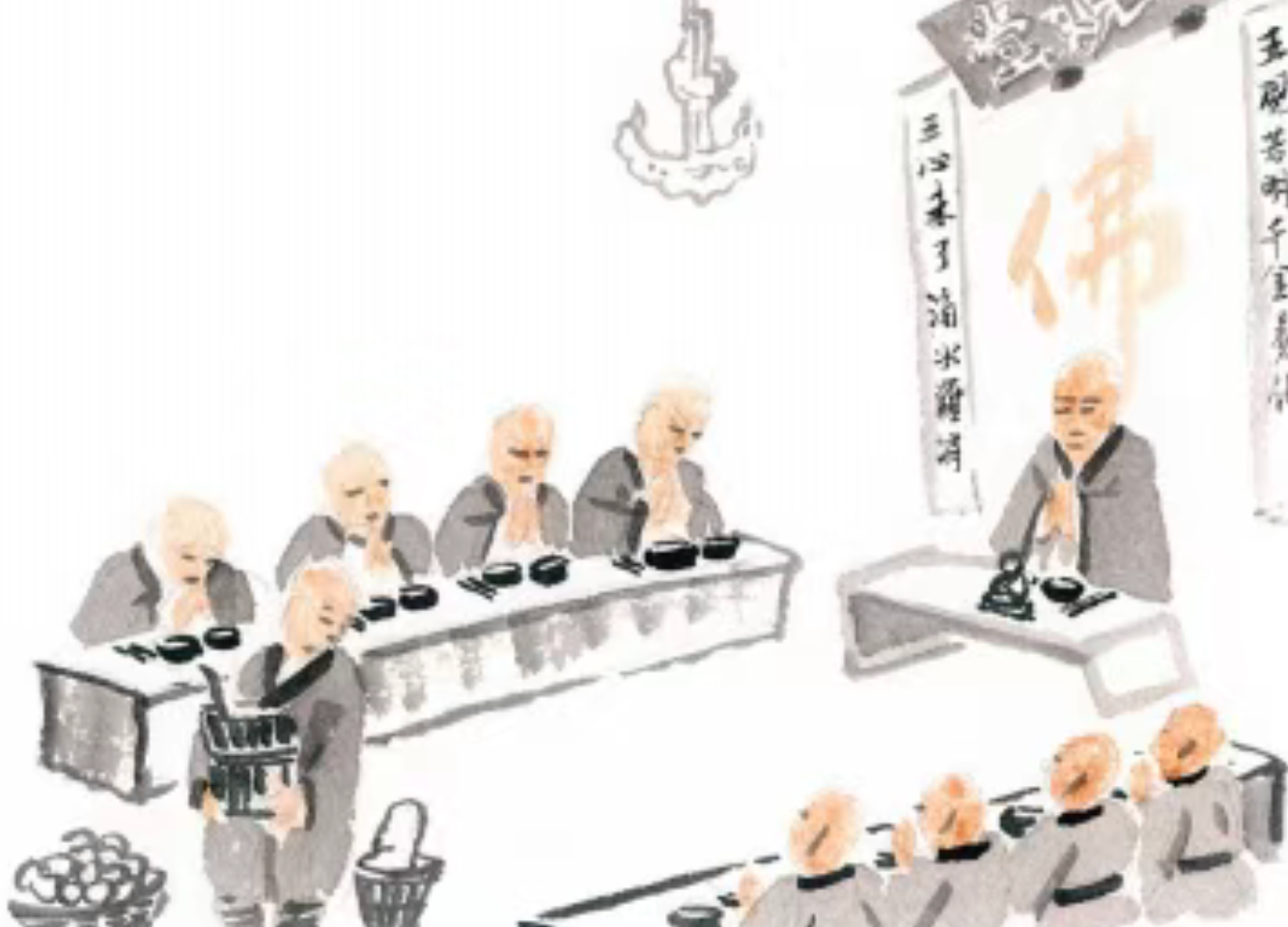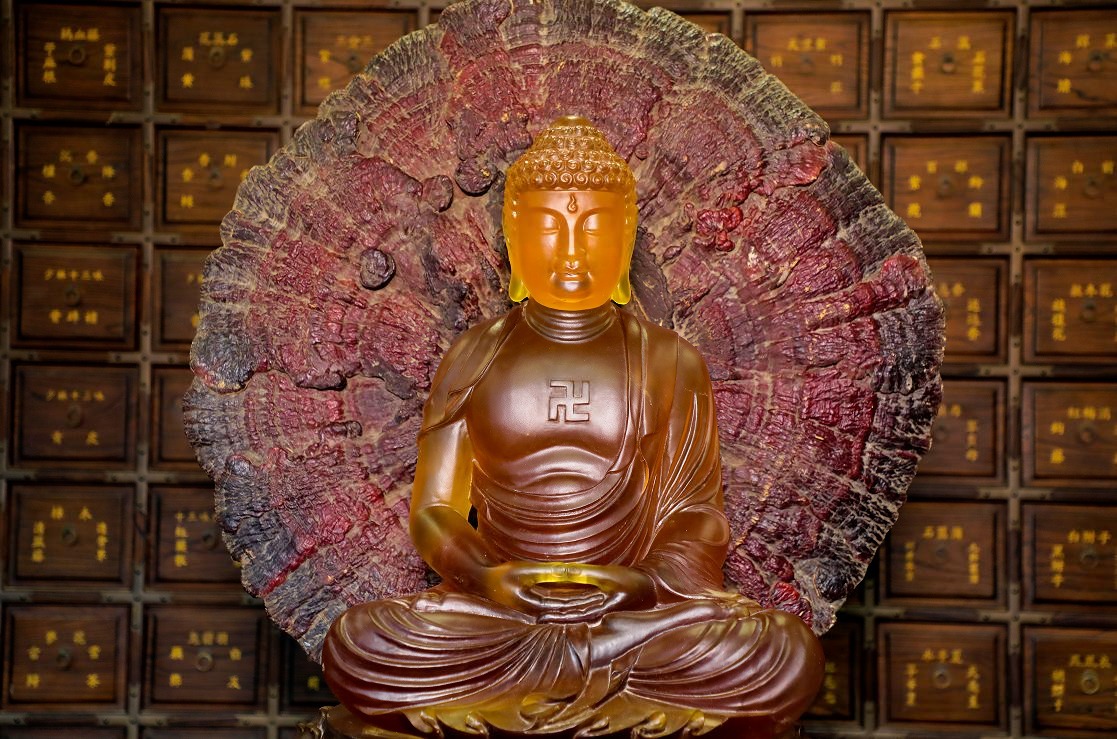At dawn, Mount Shaoshi is veiled in a delicate mist as Shaolin monks begin their day’s practice, stepping through morning dew to the rhythm of temple bells. Whenever they meet, they join their palms in anjali (a traditional Buddhist gesture of respect) and exchange the simple yet profound greeting: “Peace and Blessings.” These four words resonate through the valleys of Shaoshi Mountain like the tolling of bells, embodying the crystallized wisdom of a thousand years of Zen Buddhism.

In Buddhist tradition, greetings are not merely polite exchanges but integral to spiritual practice. As the Mahāprajñāpāramitāśāstra (Treatise on the Great Perfection of Wisdom) states: “Purity in speech is the field of merit.” A sincere “Peace and Blessings” reflects this purity of speech. This Buddhist greeting holds particular significance at Shaolin Temple, where it fosters harmony within the monastic community and cultivates a tranquil state of mind for practitioners.
From the perspective of Buddhist terminology, “Peace and Blessings” carries profound doctrinal depth. “Peace” corresponds to the Sanskrit kṣema, signifying stability and freedom from calamity, while “Blessings” translates to maṅgala, representing auspiciousness and wisdom. Together, they form a complete benediction. The Āgama Sutras record that the Buddha often greeted his disciples with these words—not as mere formalities but as expressions of his deep aspiration for all beings to be free from suffering. Shaolin’s scriptures also preserve numerous references to this greeting. The Records of Shaolin Temple from the Tang Dynasty notes: “When monks meet, they invariably exchange ‘Peace and Blessings,’ a customary practice of the Dharma.”
The wisdom of Zen Buddhism emphasizes that “the ordinary mind is the Way,” integrating profound truths into daily life. As the ancestral home of Zen, Shaolin Temple has elevated “Peace and Blessings” into a meditative practice. When uttering these words, monks must maintain mindfulness, visualizing both themselves and others receiving true peace and blessings.
During the Northern Song Dynasty, a Chan master named Huiming at Shaolin Temple would solemnly greet visitors with “Peace and Blessings.” When asked why he was so earnest, he replied: “A single ‘Peace and Blessings’ is a step toward liberation for another.” This encapsulates the Zen principle of “truth in the ordinary”—revealing the Dharma’s essence through everyday interactions. In modern times, we too can embrace this Zen wisdom. When troubled, silently repeating “Peace and Blessings” can anchor us in inner calm, much like the Peace and Blessings Herbal Incense Bracelet, crafted from natural herbs to gently diffuse fragrance and aid mindfulness.

Peace & Auspice — “Ping An Ruyi” Herbal Incense Bracelet
Inspired by Shaolin’s temple incense for seasonal protection and inner harmony. Ideal for everyday wear, meditation, travel, or high-stress environments.
Learn About This Shaolin TreasureExplanations of “Peace and Blessings” by eminent monks across generations can be categorized into three levels:
- Worldly Interpretation: Wishing for physical health, smooth living, and freedom from misfortune—the most accessible meaning.
- Practitioner’s Interpretation: Encouraging mindfulness and diligent practice to attain enlightenment. Shaolin’s warrior monks exchange these words before training, embodying this deeper aspiration.
- Ultimate Interpretation: Peace as nirvanic stillness, blessings as the fruition of Buddhahood—the most profound blessing, reflecting Mahayana Buddhism’s highest ideal.
The Tang Dynasty monk Yijing, in his Record of Buddhist Practices Sent Home from the Southern Sea, noted that Indian monks used similar greetings, highlighting the greeting’s deep roots in international Buddhist tradition.
Within Shaolin’s practice system, “Peace and Blessings” is imbued with specific meditative significance:
- Speak with Sincerity: Avoid perfunctory delivery; offer genuine wishes.
- Listen with Gratitude: Receive blessings with a heart of thankfulness.
- Contemplate While Uttering: Visualize the Buddha’s light illuminating all beings.
This method transforms a simple greeting into meditation. As an ancient Shaolin master said: “A single ‘Peace and Blessings’ purifies body, speech, and mind.” The triad of action (anjali), speech (greeting), and intention (blessing) achieves complete cultivation.
In modern society, such Buddhist greetings carry special relevance:
- Cultivating Calm Amid Busyness: Slowing speech and regulating breath while saying “Peace and Blessings” naturally reduces stress.
- Bridging Isolation: Sincere greetings dissolve barriers between people, fostering spiritual connection.
- Returning to Essence: The greeting reminds us that true wealth lies not in external achievements but inner peace.
Shaolin’s current abbot, Venerable Yongxin, remarked: “‘Peace and Blessings’ is the simplest blessing—and the deepest practice.” This encapsulates Buddhism’s essence: conveying profound truths in plain language.
As times evolve, “Peace and Blessings” has found new expressions. Shaolin’s recent cultural innovations, like the Peace and Blessings Herbal Incense Bracelet, materialize this blessing into wearable art, allowing daily connection to the Dharma’s blessings. Such creativity is not a departure from tradition but its dynamic continuation—“realization without abandoning worldly life,” as the Vimalakīrti Sutra teaches.
Conclusion: Practice in Blessing
The seemingly simple greeting “Peace and Blessings” is a priceless treasure of Shaolin culture, distilling the essence of Zen wisdom and embodying Buddhist compassion. Through history, countless practitioners have purified their minds and cultivated merit through this phrase.
In our uncertain age, may we remember this ancient blessing. Whether meeting or parting, “Peace and Blessings” offers strength and solace—not only as a wish for others but as a reminder to ourselves: to abide in inner peace is to receive true blessings.
A final Shaolin koan concludes this reflection:
A monk asked the master: “What is the essence of the Buddha’s teaching?”
The master replied: “Peace and Blessings.”
The monk attained sudden enlightenment.




